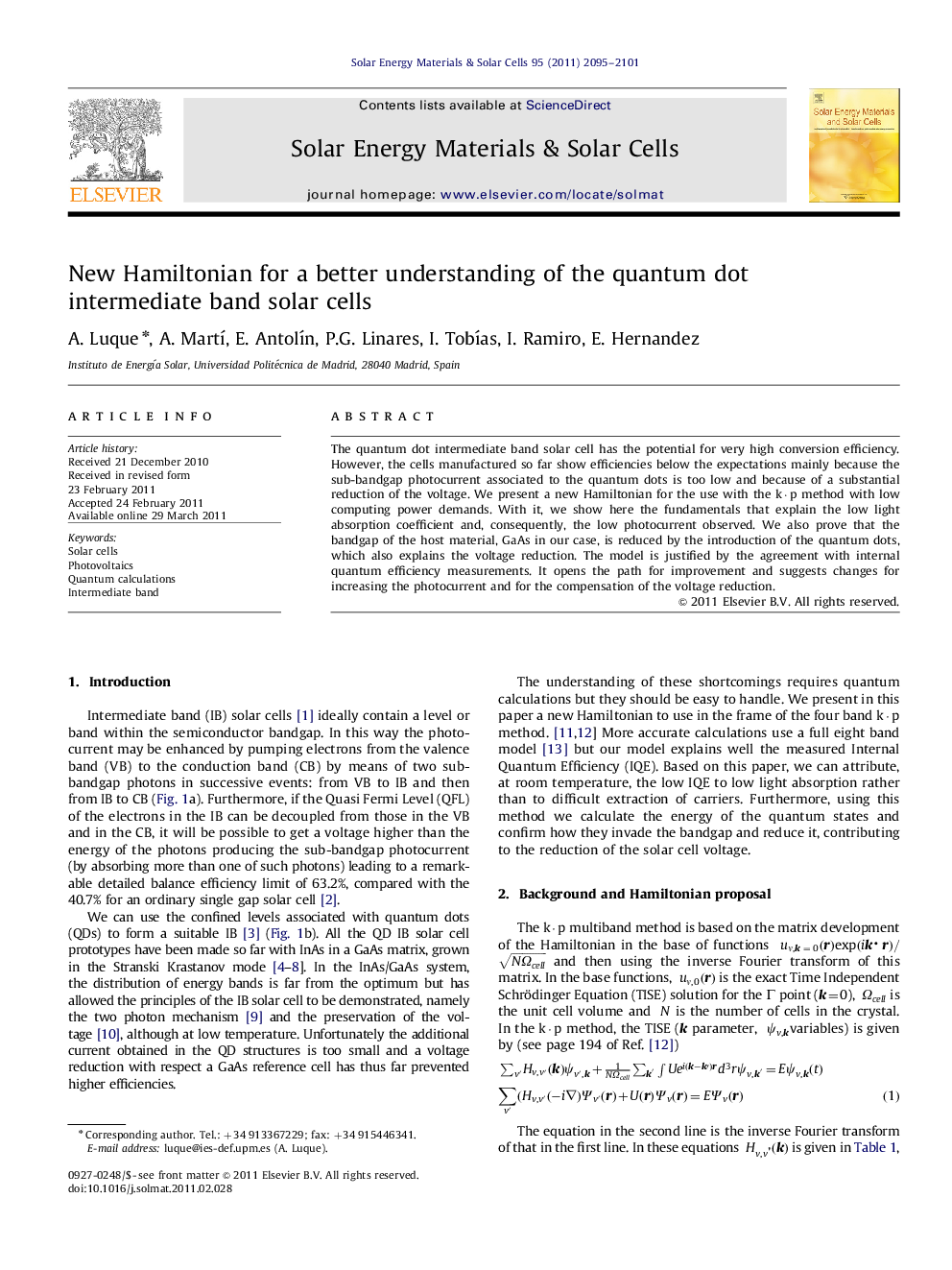| Article ID | Journal | Published Year | Pages | File Type |
|---|---|---|---|---|
| 78752 | Solar Energy Materials and Solar Cells | 2011 | 7 Pages |
The quantum dot intermediate band solar cell has the potential for very high conversion efficiency. However, the cells manufactured so far show efficiencies below the expectations mainly because the sub-bandgap photocurrent associated to the quantum dots is too low and because of a substantial reduction of the voltage. We present a new Hamiltonian for the use with the k·p method with low computing power demands. With it, we show here the fundamentals that explain the low light absorption coefficient and, consequently, the low photocurrent observed. We also prove that the bandgap of the host material, GaAs in our case, is reduced by the introduction of the quantum dots, which also explains the voltage reduction. The model is justified by the agreement with internal quantum efficiency measurements. It opens the path for improvement and suggests changes for increasing the photocurrent and for the compensation of the voltage reduction.
Graphical Abstract|X〉|X〉 envelope function contour for the light hole fundamental state.Figure optionsDownload full-size imageDownload as PowerPoint slideResearch highlights► A new Hamiltonian is proposed to study the intermediate band solar cell. ► It allows for calculating the absorption coefficient for interband transitions. ► The calculated internal quantum efficiency reproduces the measured one. ► A reduction of the bandgap is calculated that explains the voltage reduction. ► Weak sub-bandgap photon absorption that jeopardizes cell efficiency is explained.
